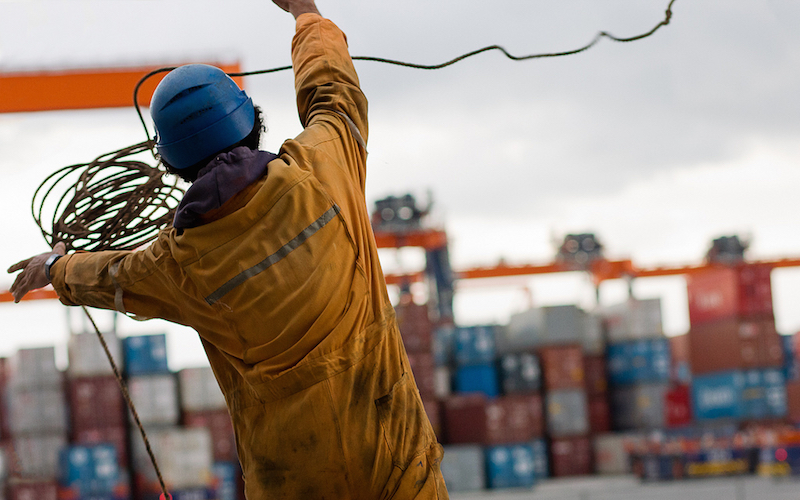
China’s Counter-Pivot Response
Following the United States’ declaration of the “Pivot” or “Rebalance” to Asia strategy in 2011, certain events that have occurred in Asia are worth noting. In particular, more aggressive diplomatic and economic initiatives undertaken by China. A year after the US Rebalance was announced, a Chinese scholar came up with the idea of the “Marching West” strategy, which aimed to focus on developing China’s diplomatic and economic ties with countries in the Eurasian region.
Although there is no official confirmation that the Chinese have adopted this strategy, it appears that this is the case. This is because China’s initiatives seem to be directed westwards, though its initiatives now also cover parts of East Asia and the South Pacific. China’s response may be inferred to be a quadruple-combo of diplomatic and economic initiatives, namely: (1) the One Belt One Road (OBOR) strategy or Belt and Road Initiative (BRI), composed of the Silk Road Economic Belt (SREB) and the 21st Century Maritime Silk Road (MSR); (2) the Asian Infrastructure and Investment Bank (AIIB); (3) the revival of the Free Trade Area of Asia and the Pacific (FTAAP) initiative; and (4) the intensification of bilateral partnerships with neighboring states.
The US’ Twin Trade Arrangements: TPP and TTIP
To disprove that the Rebalance is not merely about strengthening military alliances, the US reiterated that the Rebalance has an economic dimension as well. The Trans-Pacific Partnership (TPP), known as a “comprehensive and high-standard” free trade deal, is a US-led regional arrangement with 11 other countries in the Asia-Pacific. Although the TPP was not explicitly mentioned in the US pivot strategy, it, however, is implicitly incorporated, as the US seeks to strengthen economic engagement with the Asian region. The deal, if effected, is said to account for roughly 40 percent of the world’s GDP and a third of world trade. This is important for the US because it would allow American corporations greater access to overseas markets, and thereby, contribute to economic recovery.
The Trans-Atlantic Trade and Investment Partnership (TTIP), on the other hand, is related to the TPP because it is its twin free trade project that is designed to draw together the European Union (EU), the world’s largest market, and the US, the world’s largest economy. Rounds of negotiations are still ongoing.
The US and the EU represent 60 percent of the global GDP, 33 percent of world trade in goods, and 42 percent of world trade in service. Therefore an agreement between the two major economic actors could possibly represent the largest regional free trade agreement in history and would be a real game-changer. However, for China, the TTIP, together with the TPP, are known to be “ABC” trade blocs, meaning “Anybody But China,” because both regional arrangements do not include them. It is even thought by some in China to be dual apparatuses to contain and leave the world’s second largest economy out of the picture.
China’s Grand Initiatives
China certainly does not want to be left out. Seemingly, the TPP and TTIP aimed to reach the Asian and European markets, respectively. Nearly just two years after the US pivot, China brought to the fore creative ways to reach the same audiences that the US is reaching. It cannot be denied that Europe is important for China because the EU has been China’s largest trade partner since 2004, and China is EU’s second largest trade partner. Since China cannot join the TPP at the moment (due to very high standards), China has devised two ways: interconnectivity and infrastructure, to counteract their dilemma.
In September of 2013, Chinese President Xi Jinping initiated the plan for the SREB during a visit to Kazakhstan. A month later, he proposed the building of the MSR and the creation of an AIIB in a visit to Indonesia. Another month later, he pledged to set up the $40 billion Silk Road Fund. And in November of 2014, at the Asia-Pacific Economic Cooperation (APEC) Summit held in China, a roadmap for reviving the FTAAP was agreed. President Xi called it the “aggregation” of existing tree trade agreements (including the TPP and the ASEAN-led (Association of Southeast Asian Nations) Regional Comprehensive and Economic Partnership (RCEP)). The move aimed to ensure that a more inclusive regional arrangement was the way forward.
Subsequently, in March of this year, the OBOR Action Plan was unveiled. The plan highlights the goal of linking infrastructure and trade between two continents (Asia and Europe) comprising of six sub-continents and sub-regions (Southeast Asia, South Asia, Central Asia, Middle East, Eastern Europe, South Pacific), which would involve around 50 countries with 4.4 billion people (or 63 percent of the global population). More explicitly, the OBOR initiative aims to prioritize cooperation on policy, investment, finance, and people-to-people exchanges. If successful, the volume of trade is expected to surpass $2.5 trillion within a decade.
The AIIB, on the other hand, is a China-led financial institution seen by some as a potential rival to the Japanese-led Asian Development Bank (ADB), Western-dominated International Monetary Fund (IMF) and the World Bank (WB). It intends to finance infrastructure projects in Asia and would have an authorized capital of $100 billion. The US, however, opposes the AIIB due to concerns regarding “standards of governance and lending.” But as of the deadline last April, 57 countries had already joined to become founding members, including the US’ closest allies the United Kingdom, France, Germany, Italy, Australia, Canada, and South Korea. This certainly proved to be another way of reaching and engaging China’s European economic partners, with 17 of them already on the bandwagon.
Moreover, according to the ADB, Asia’s infrastructure demand is expected to reach around $730 billion per year by 2020, with the same being able to supply only $10 billion annually. Given this, the AIIB would certainly have a niche in financing the region’s needs for railways, ports, highways, energy, electricity, and telecommunications, which are needed to support interconnectivity and boost global economic growth. In fact, the “renminbi factor” (internationalization of the Chinese currency) is being considered as an add-on initiative in terms of labor, investment, contract projects, trade and currency exchange with countries along the routes.
Strategic Partnerships not Alliances
China does not have security alliances unlike the US, but in lieu of such, it does have intimate diplomatic relations with many of its neighbors, which it labels “strategic partnerships.” For instance, in April of 2012, China and Thailand agreed to upgrade their bilateral relationship to “comprehensive strategic partnership.” In October of the following year, China upgraded its diplomatic ties with both Indonesia and Malaysia to “comprehensive strategic partnership,” and with Brunei to “cooperative strategic partnership.”
In July of 2014, Beijing vowed to enrich existing “strategic cooperative partnership” with South Korea, and in the following month, sought to deepen “strategic partnership” with ASEAN. In November of the same year, China eventually upgraded its ties with Australia to “comprehensive strategic partnership,” and in April this year, with Vietnam to “comprehensive strategic cooperative partnership” — the kind of diplomatic relationship that China has had with Cambodia since 2010. What is notable here is that all these have taken place after the US announcement of the Rebalance. One could surmise that the Rebalance might have even accelerated them.
What is China doing?
It is interesting to note how history is playing a role in China’s present day foreign policy just like the revival of the ancient trade routes. More importantly, China has shown that it can make full use of geography and its economic clout in accelerating interconnectivity, promoting interdependence, and in heightening the costs of conflict. China’s initiatives also show that it does not want to be left out but rather is key in integrating a “grand synthesis of economic and cultural corridors.”
In comparing the actions of both China and the US, it can be suggested that the former is promoting “intercontinental cooperation” where it is at the center, while the latter is promoting regional cooperation where it is the leader. It remains to be seen, however, how the US will respond to the latest initiatives of China.
That response may be in the form of what President Obama said earlier this year: “China wants to write the rules for the world’s fastest-growing region. That would put our workers and our businesses at a disadvantage. Why would we let that happen? We should write those rules.” Or what he said in November of 2011 in Australia: “The United States is a Pacific Power, and we’re here to stay.”
